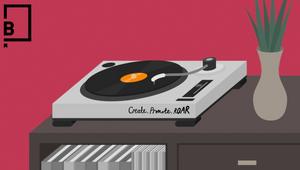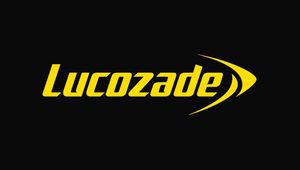
RAJAR Q1: Record Figures for Commercial Radio and Why Audio Branding Is More Important than Ever Before

Recent statistics show that audio is becoming an increasingly important part of everyday life. The latest RAJAR figures indicate that commercial radio now reaches 38.7 million of us per week, a share of 51.4% vs BBC radio, up from 48.4% this time last year.
And the way we listen is shifting, with more than two-thirds of audiences listening to radio through digital channels and smart-speaker audiences increasing to 14%, up from 9.9% in 2022.
Add to this the ever-increasing choice of podcasts and streaming platforms, and how a brand sounds has risen up the agenda for agencies, brands and marketers alike.
Sam Dillon, head of production at Forever Audio has spent 14 years helping brands to find their sound. Here he shares his thoughts on what makes great audio branding.
Q> Are you seeing more brands wanting audio branding?
Sam> We’ve been composing music and helping brands with their sonic identities for over a decade and now demand is higher than ever. We’re receiving briefs from established brands, partner agencies and start-ups wanting to give their brand a voice. From branded music to sonic logos, more brands than ever are dialled into the importance of a strong sonic identity.
Q> And why do you think this is happening now?
Sam> The advent of voice-activated devices, music streaming platforms and podcasts has given brands a huge opportunity to reach audiences in an audio-only format. We know from countless studies that people buy with their hearts, so selecting the right music and sonic tone, in order to build a connection with an audience, is crucial.
Bespoke music that’s composed for a brand can be tailored to fit the exact needs of the brief and is fully ownable, allowing for long-term use and promoting brand synergy.
Q> What makes great audio branding?
Sam> Firstly, brand audio needs to be unique, clear and in-line with brand identity and values. We as producers have to be aware of the duration of the sonic logo - too short and they will get lost and not allow for successful recognition, too long and we begin eating too far into script time.
All audio elements need to be accessible for all markets to use. Additional music arrangements can be created for territories that demand a different musical execution with regards to instrumentation and style, ensuring global cultural relevance.
Brands should avoid using sounds, instruments and production techniques that will date easily and try to avoid being too genre-specific - in audio branding, longevity is important. It’s vital that the audio branding exercise is treated with sufficient importance. Buy-in from all stakeholders/decision-makers throughout the process is key.
Audio branding elements must have a strong tie-in with visuals and existing assets to enable a cohesive relationship between audio and visual and should not throttle creativity or restrict future ideas - the ability to rearrange and manipulate audio assets to fit new campaigns while retaining the brand ‘audio motif/melody’ is a superpower.
Furthermore, there needs to be easily accessible files in a range of formats with asset toolkits for content creators and agencies. Audio guidelines that explain the application of the assets is hugely important. With more and more content being produced, concise instructions as to how audio assets are to be used is vital.
And most importantly - the use of repetition and a confident roll-out across all activity is the most common downfall in audio branding. A sonic logo or piece of branded music is not just for use on a campaign level, instead it must be rolled out across all messaging and mandated on all audio and visual spots.
Q> What level of expertise goes into audio branding creation?
Sam> Many people find it hard to talk about music and sound and so getting a clear and concise brief can be tricky. It is important for us as musicians and audiophiles that we avoid using overly technical musical terms and jargon. The importance should always be placed on the goal of the piece and how the brand wants audiences to feel about a product. Conversations should utilise existing references to help convey musical theories - we always work to the notion of ‘show don’t tell.’
Q> Is it cost-restrictive for smaller businesses and startups?
Sam> Licence fees are based on media usage, so costs are in line with the activity that is planned. As a brand grows, introduces new platforms or expands into new territories the licence can be adapted as required.
Q> What are your audio branding predictions for the future?
Sam> I predict that we’ll see a huge sonic snowball effect, with more and more brands looking to reinforce their audio personality. A robust sonic identity is quickly becoming a prerequisite for success, with those thinking of themselves as ‘purely visual’ brands turning to audio as a way to help them stand out from the crowd and engage with audiences on a truly emotional level.
To find out more about audio branding and how it could work for you, please contact briefs@foreveraudio.com












